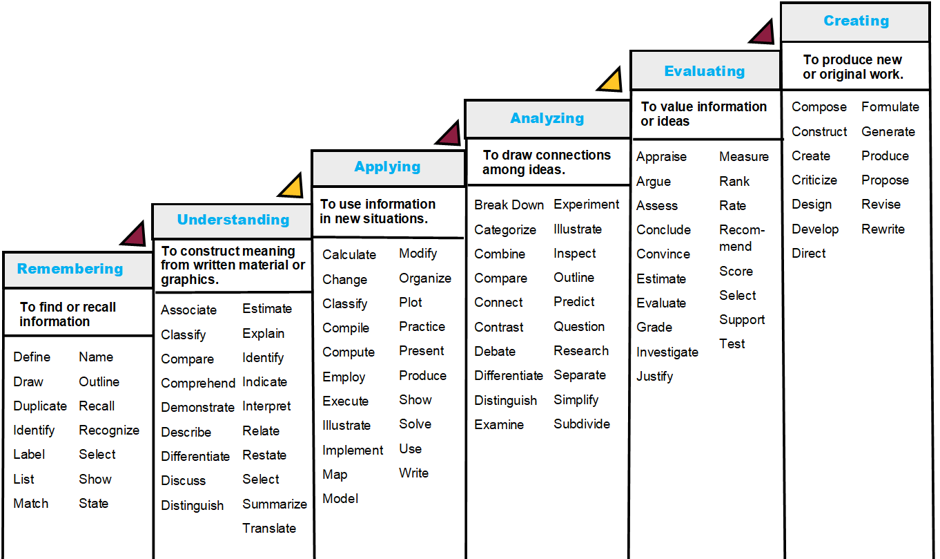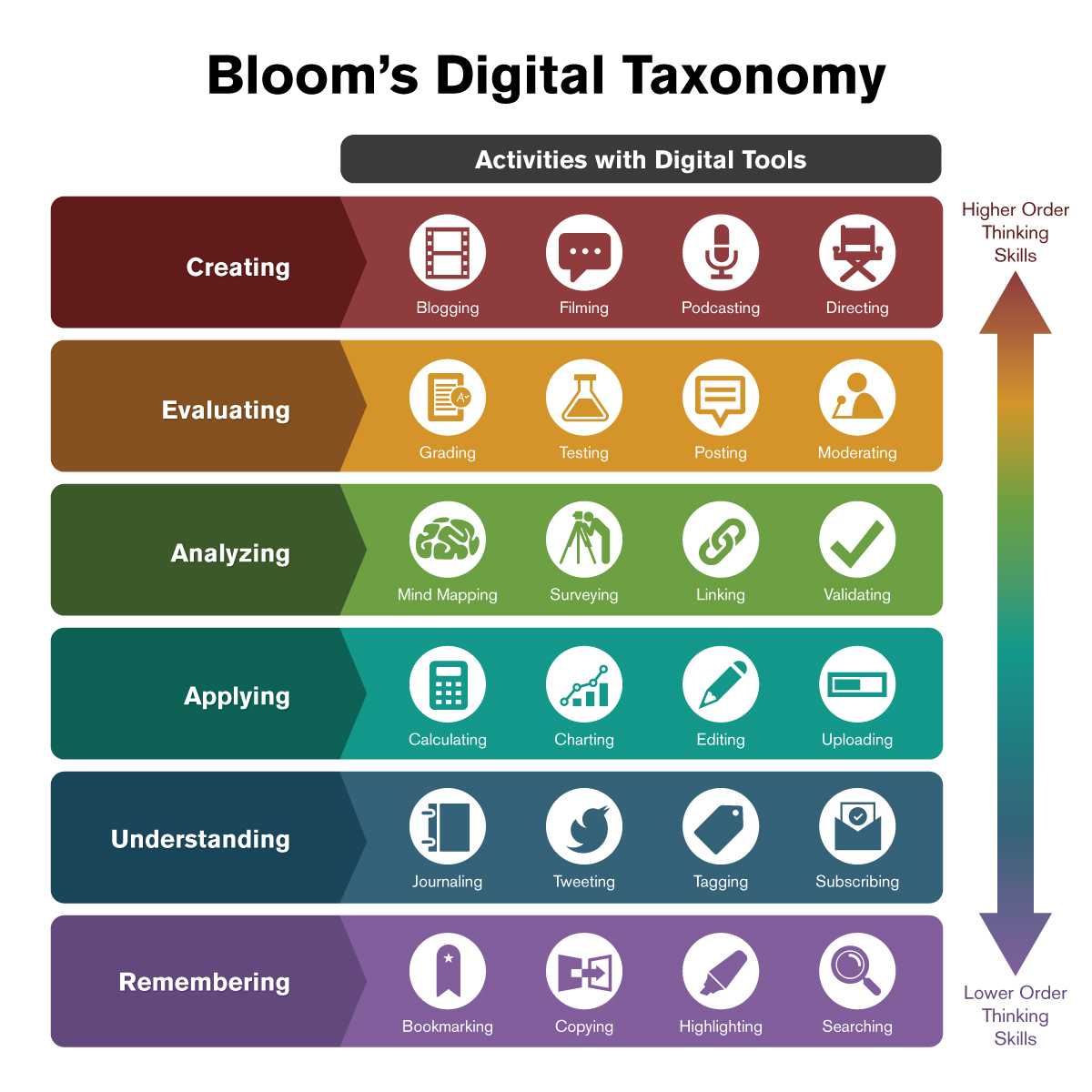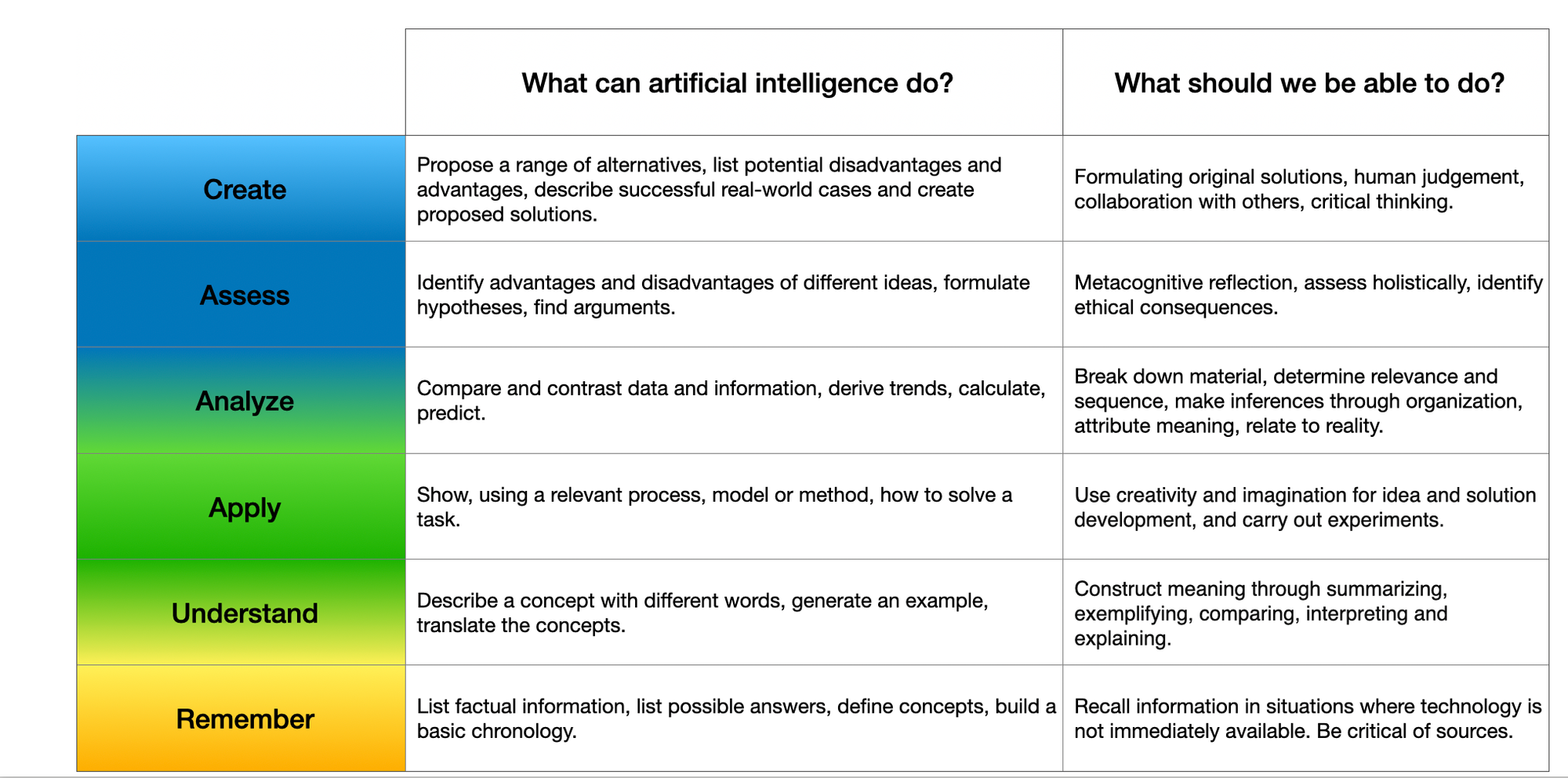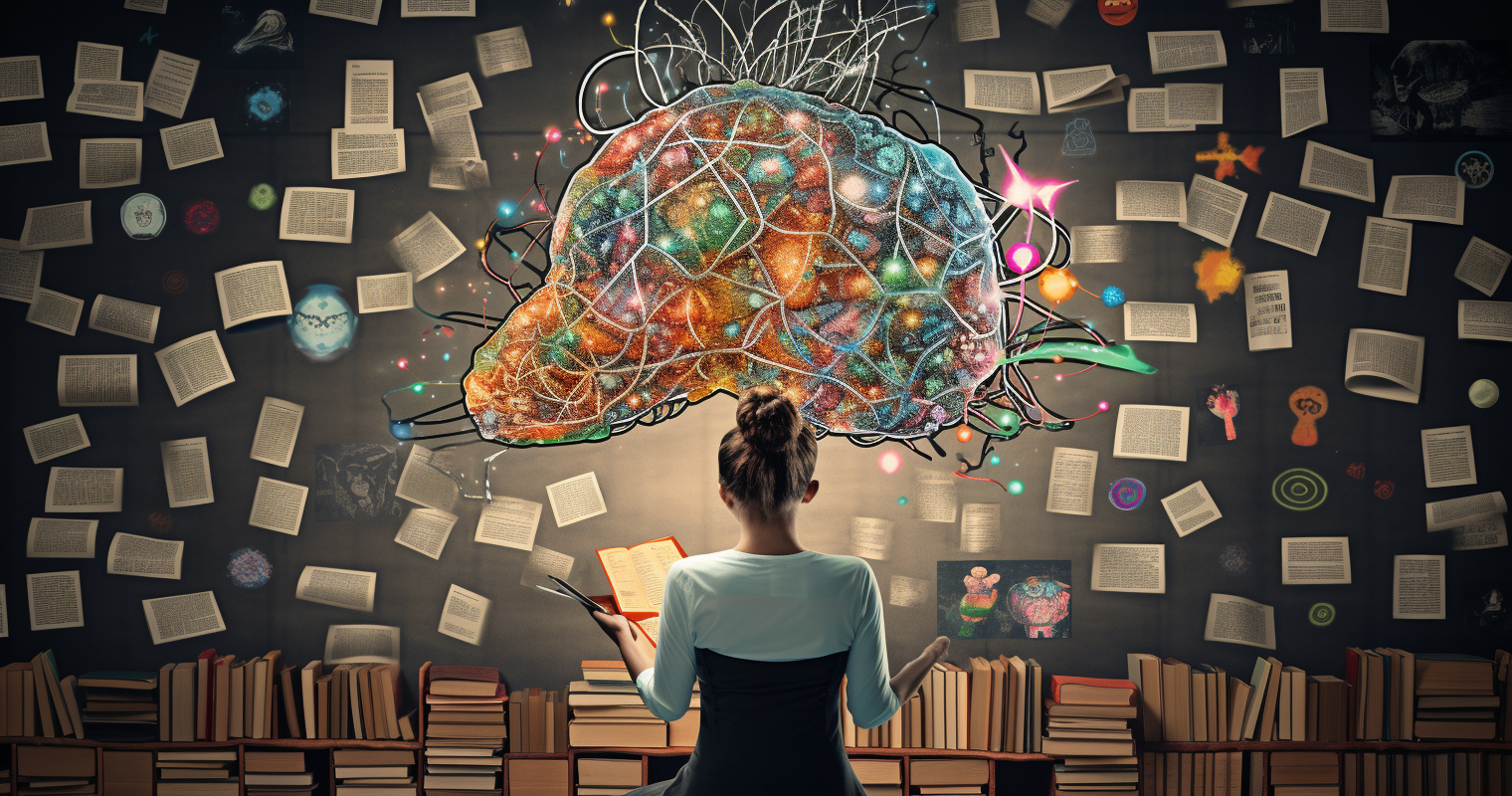In this article, we explore what happens when artificial intelligence is integrated into our subjects across all levels of the education system. We ask: What becomes essential to learn when computers can assist us with remembering and thinking, and what might become less important? However, it's about more than what we need to know; it's also about how we learn it.
In the following sections, we will briefly review the development of Bloom's taxonomy. Finally, we present our proposal for a new taxonomy that integrates and accounts for artificial intelligence.
The traditional Bloom's Taxonomy (1956):
In its traditional form, Bloom's Taxonomy describes the knowledge, mental skills, and processes, categorized on levels from simple to more complex - and simultaneously from the known to the unknown. Each step in the taxonomy is a prerequisite for the next, meaning that levels cannot be skipped. One must have knowledge and understanding before one can analyze and evaluate.

Bloom's Revised Taxonomy (2001):
The taxonomy has been revised many times since Benjamin Bloom proposed his theories in 1956. Anderson and Krathwohl made one such revision in 2001, where creative competencies replaced synthesis and simultaneously moved to the highest level in the model.

Bloom's Taxonomy with Digital Technologies (2007):
With the introduction of digital technologies, Andrew Churches 2007 proposed another version where the role of digital technologies in the various steps is described.


Bloom's Taxonomy with Artificial Intelligence (2023):
Inspired by Oregon State University, we have reinterpreted Bloom, reflecting on artificial intelligence's role at the individual taxonomic levels. In the chart below, we have compared what we, as humans, need to be able to do when we incorporate artificial intelligence at different stages.

The model is created as a starting point for discussing what artificial intelligence can contribute to individual subjects. We know that development is rapid, and the content may need to be updated by the time we send out this article. Therefore, the model is also intended as an invitation to explore one's subject and find the content that ensures teaching remains relevant in an era marked by artificial intelligence.
At the same time, it is also a method for creating balance in teaching. Although artificial intelligence can do a lot, it's not intended that students should rely solely on it. If we leave everything to artificial intelligence or conversely ignore the technology entirely, it could negatively impact students' education and development.
Sources:
https://www.researchgate.net/publication/228381038_Bloom's_Digital_Taxonomy
https://quincycollege.edu/wp-content/uploads/Anderson-and-Krathwohl_Revised-Blooms-Taxonomy.pdf








